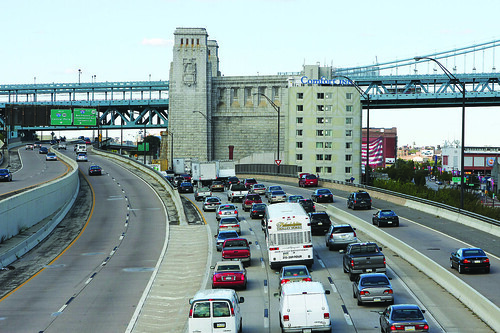A multi-university research team spent more than two years studying traffic jams.
To most, traffic is nothing more than part of a daily commute. But to Benjamin Seibold, an assistant professor of mathematics, traffic is both fascinating and important.

Seibold is a member of an international, multi-university research team that has been working more than two years to understand the dynamics of traffic, including how “phantom jams,” or jams that happen for no reason, occur.
A recent study matched up Seibold, who joined the group a year ago, with computer engineers, a mechanical engineer and an expert on explosions.
The group is formed by people from McGill University and the University of Alberta Edmonton, both in Canada, King Abdullah University of Science and Technology in Saudi Arabia and the Massachusetts Institute of Technology, in addition to Temple.
This research comes at a time when interest in the topic of traffic and what can be done to control it is peaking, Seibold said.
Seibold said this is partly due to increased traffic congestion around the world, the worst example being a recent 10-day traffic jam in China.
“We cannot really remove traffic jams from the road,” Seibold said, “but jams are avoidable.”
The traffic model employed in the study was more ideal than real-world driving conditions usually are. The model used cars, each traveling at about the same speed as one another, on a single-lane highway, with all drivers behaving predictably.
The research suggested that, even with this ideal model, there is instability in the system. When the density of cars on the road reaches a certain level, it causes cars to become bunched closely together, Seibold said.
“The Schuylkill Expressway is a prominent example of this,” he added.
Once this happens, a phantom jam is imminent. If one driver slows down, it causes other drivers, who are now closer to one another, to press on their brakes and causes a wave-like effect that travels backward against the traffic.
These waves, named “jamitons” by the research group, are the subject of the study’s first published findings.
The research team discovered that jamitons travel in predictable patterns that can be described with the same equations used to describe shockwaves from certain explosions. In an explosion, a sudden shock is followed by a sudden acceleration of gasses. The same principle is in action in traffic when a shock, or sudden braking, is followed by a sudden acceleration or speeding out of the lurch.
Seibold said he hopes the group’s research will lead to a better understanding of the fundamental dynamics of traffic and traffic jams, which can be used by highway engineers.
Currently in the U.S., some highways have LED speed-limit signs that can be changed remotely, but they are not widely used and are generally reserved for use during inclement weather.
Another possibility for controlling traffic is a system that could mitigate erratic or aggressive driving tendencies. These systems, however, are still in development.
Seibold said that for now, the best hope for controlling traffic jams is for drivers to alter their habits, adding that driving smoothly and not aggressively is the only sure way not to contribute to phantom traffic jams.
Michael Polinsky can be reached at michael.polinsky@temple.edu.



Be the first to comment